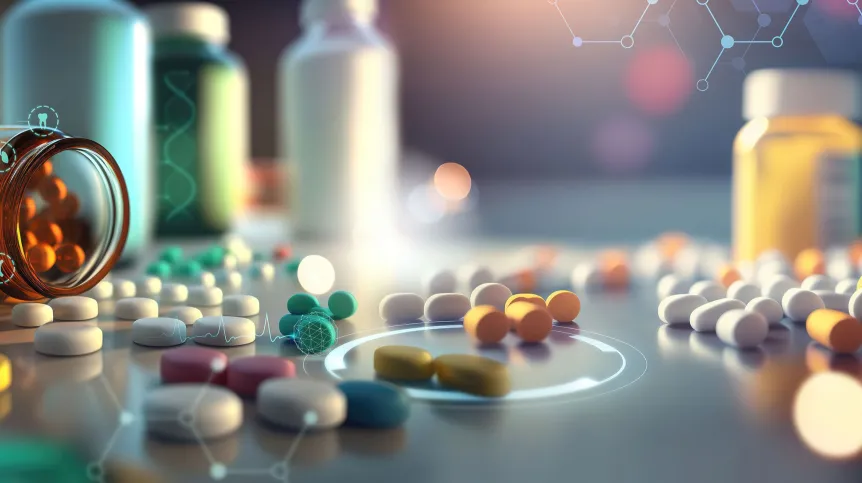
Antibiotic resistance is a huge threat to humans. However, we have made a discovery that may help in the fight against this increasingly growing global problem, Jonasz Patkowski, a doctoral candidate at Imperial College London, says in an interview with PAP.
Nature Communications published a widely cited paper on antibiotic resistance research, the first author of which is Jonasz Patkowski. The expert has been dealing with this issue since his bachelor's degree at the University of Warsaw, and then his master's studies at the University of Cambridge.
PAP: The latest research at the Department of Life Sciences Imperial College London, in which you have participated, shows that bacteria can transfer genetic information between themselves in much more difficult conditions than previously suspected. This means that the fight against antibiotic resistance may be much more difficult than we thought. These analyses were carried out on the example of intestinal bacteria capable of persisting in more difficult conditions.
Jonasz Patkowski: It seemed that the environment of our intestines, with their acidity, higher temperature and turbulence, would reduce the efficiency of gene transfer between bacteria through conjugation, i.e. direct transfer of a DNA fragment. However, we have proven that it is quite the opposite - the structure of the pili, through which this is done, a specific, hollow cellular hair-like appendage, is stable despite the difficult environment, in terms of both thermochemistry and mechanics.
PAP: This means that bacterial resistance to antibiotics is an even greater challenge.
J.P.: Yes, unfortunately it will be even more difficult. But there is also a positive effect of our research. We have proven which factor in the pili structure is responsible for its stable properties. And this opens the way to look for something that will neutralize and disrupt the structure of the pili.
PAP: Which factor plays such an important role in the transfer of genetic information between bacteria?
J.P.: We expected the pilus to be something like an elongated polymer made entirely of protein molecules called pilin. In 2016, it was discovered that between these pilin proteins there are also phospholipids. Different structures of pili used by bacteria able to survive in particularly difficult conditions began to be discovered. However, the role of phospholipids remained unclear. We have managed to show that without them, pili are not so durable. Therefore, if we manage to disrupt the incorporation of phospholipids into the pilus structure, there will be no conjugation between bacteria, or at least it will be limited.
PAP: We need to develop a substance capable of doing that. And if we obtain it, can it be used as a preventive measure to protect against the spread of antibiotic resistance in bacteria?
J.P.: Yes, it would be a prophylactic application. Such substances could be administered along with antibiotics and in animal husbandry. We intend to continue our research in this direction.
PAP: What are the forecasts regarding antibiotic resistance? So far it is spreading all over the world and there is no stopping it.
J.P.: The World Health Organization (WHO) predicts that by 2050 the number of deaths due to antibiotic resistance in the world will be similar or even higher than the number of cancer deaths. The overuse of antibiotics contributes most to this. Patients often take them without consulting a doctor, even during viral infections, although antibiotics do not work against viruses.
PAP: Nothing changes?
J.P.: %Things do change. In some countries, they are no longer used as often for colds and flu. Targeted antibiotic therapy is increasingly used, i.e. a test is first performed to check to which antibiotics the bacterial infection in a given patient is sensitive to. Instead of a cocktail of broad-spectrum antibiotics, the best one is administered to target at a given infection. However, we are still in the early stages of the fight against antibiotic resistance.
PAP: The pandemic has made the situation even worse. Many COVID-19 patients have asked doctors to prescribe antibiotics, even though the disease is caused by coronaviruses, not bacteria.
J.P.: Unfortunately, as soon as symptoms of respiratory tract infection, cold, flu or COVID-19 appear, we still reach for antibiotics. In the event of a bacterial infection, we should complete the antibiotic treatment as recommended, instead of interrupting it as soon as we feel better. In no way should we use the drugs we have left over on our own.
PAP: In some countries, for example in Scandinavia, the overuse of antibiotics has been reduced. So it is possible.
J.P.: In the UK, access to antibiotics is being limited, probably more than in Poland. At least that is my experience. Antibiotics are administered only after some time, when secondary infections of bacterial origin join the viral infection. Doctors do not prescribe an antibiotic at the first consultation unless a bacterial infection is confirmed. An antibiotic susceptibility test called antibiogram is necessary to select the most appropriate antibiotic, effective in the treatment of a given bacterial infection.
PAP: Are you optimistic about the possibility of reducing antibiotic resistance?
J.P.: Yes, but only if there is money for research in this area, as our study shows. For now, most funds are spent on research into new anti-cancer therapies and the treatment of cardiovascular diseases. This is very important of course, but the fight against antibiotic resistance is now also a race against time. Because there are more and more bacteria resistant to many antibiotics and there is a shortage of effective antibiotics. (PAP)
Interview by Zbigniew Wojtasiński
PAP - Science in Poland
zbw/ agt/ kap/
tr. RL













